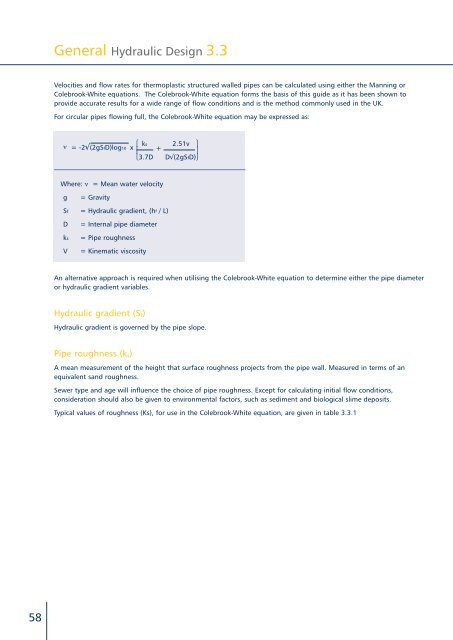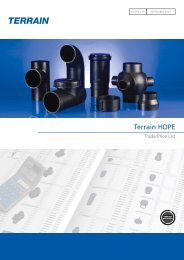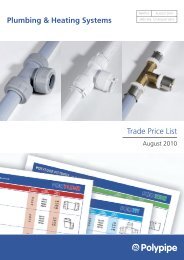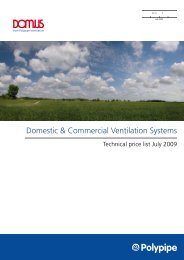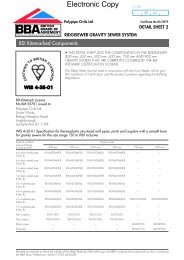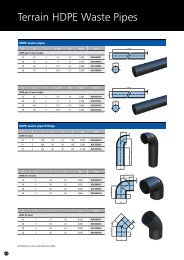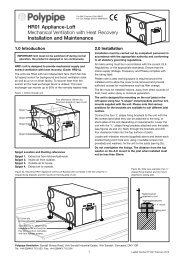advanced drainage system - Polypipe
advanced drainage system - Polypipe
advanced drainage system - Polypipe
You also want an ePaper? Increase the reach of your titles
YUMPU automatically turns print PDFs into web optimized ePapers that Google loves.
General Hydraulic Design 3.3<br />
Velocities and flow rates for thermoplastic structured walled pipes can be calculated using either the Manning or<br />
Colebrook-White equations. The Colebrook-White equation forms the basis of this guide as it has been shown to<br />
provide accurate results for a wide range of flow conditions and is the method commonly used in the UK.<br />
For circular pipes flowing full, the Colebrook-White equation may be expressed as:<br />
⎧ ks<br />
n = -2√(2gSfD)log10 x + 2.51v ⎫<br />
⎪<br />
⎪<br />
⎩3.7D<br />
D√(2gSfD) ⎭<br />
Where: n = Mean water velocity<br />
g<br />
= Gravity<br />
Sf = Hydraulic gradient, (hf / L)<br />
D<br />
ks<br />
V<br />
= Internal pipe diameter<br />
= Pipe roughness<br />
= Kinematic viscosity<br />
An alternative approach is required when utilising the Colebrook-White equation to determine either the pipe diameter<br />
or hydraulic gradient variables.<br />
Hydraulic gradient (S f)<br />
Hydraulic gradient is governed by the pipe slope.<br />
Pipe roughness (k s)<br />
A mean measurement of the height that surface roughness projects from the pipe wall. Measured in terms of an<br />
equivalent sand roughness.<br />
Sewer type and age will influence the choice of pipe roughness. Except for calculating initial flow conditions,<br />
consideration should also be given to environmental factors, such as sediment and biological slime deposits.<br />
Typical values of roughness (Ks), for use in the Colebrook-White equation, are given in table 3.3.1<br />
58


